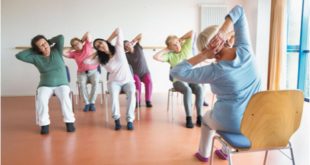By John C. Kagan, M.D.


But before embarking on “spring training,” you might want to take a few precautions. If you are moving from a sedentary lifestyle a more active one, here are a few tips from the American Academy of Orthopedic Surgeons to prevent sports-related injuries from putting a damper on your quality of life this spring.
1. Increase your activity level gradually.
Unless you’ve been physically active year-round, start slow to rebuild muscle strength and stamina. Don’t forget to warm up and cool down before and after each exercise session and to gently stretch. It helps keep muscles and joints flexible.
2. Avoid too much repetition. Cross training is the ideal way to approach getting in shape for spring. It simply means varying your routine. Don’t book a tee-time on the golf course or play tennis every day of the week. Instead, mix it up to avoid stressing the same muscles and joints over and over again.
3. Give your body time to rest and recover. Don’t expect to be at the same peak level of performance if you’ve been inactive all winter. It’s also critical not to work through pain. Minor muscle pain and soreness is to be expected, but sharp pain is a warning sign of a more serious injury.
4. Schedule a physical. If you haven’t exercised in a while, are over age 50 or have had major health problems in the past, schedule an appointment with your physician before you take on too much physical exertion.
5. Use common sense. While spring weather may be relatively mild, the sun is still strong in Southwest Florida. Stay hydrated by drinking plenty of water and wear sunblock to reduce the sun’s harmful UVA and UVA rays.
Common Sports Injuries
What are the most frequent sports-related injuries? Golfer’s and tennis elbow, swimmer’s shoulder, stress fractures and shin splints in runners are among the most common complaints that are evaluated and treated by orthopedic surgeons. Quite frequently, they are related to repetitive, overuse trauma to the body.
For example, tendinitis is the culprit in golfer’s and tennis elbow. The tendon in the elbow becomes inflamed in response to repetitive stress on the joint, causing pain, redness, swelling and tenderness. The same situation can affect the shoulder joint and the muscles and tendons of the arm.
Sometimes the bursa, a small fluid-filled sac between the tendon and muscle and the bone may also become inflamed. Swimmer’s shoulder is often related to tendinitis of the rotator cuff in the shoulder joint.
Runners are at high risk for shin splints and stress fractures. Stress fractures are tiny “micro-cracks” in the bone that result from the muscles being stressed beyond their ability to absorb the shock of impact when the foot strikes the ground. Instead, the stress load is transferred to the bone, which fracture under the force. Shin splints are caused by irritation and stress to the area of the leg where the calf muscle attaches to the shinbone.
Sprains and strains can happen in any type of recreational sport. Sprains refer to ligaments that are stretched or torn, while strains affect the ligaments.
Pay Attention To Warning Signs
Swelling, reduced range of motion, numbness and tingling, muscle tenderness and joint pain are common symptoms of sports-related trauma to the body. Most of the time, conservative treatment, such as rest, application of hot or cold and over-the-counter medication, can help.
But if the pain is sharp, persists, wakes you up at night or prevents you from enjoying your favorite athletic activity, call an orthopedic specialist for a medical consultation. Anti-inflammatory medications and injections may be prescribed. Physical therapy can often provide some relief. But more serious issues may require arthroscopic diagnosis and treatment by an experienced orthopedic surgeon.
Orthopedic surgeons are doctors who specialize in treating musculoskeletal injuries that affect the bones, muscles, ligaments and tendons, joints and cartilage. Dr. John Kagan has more than 30 years of experience treating patients of all ages with orthopedic-related conditions. Learn more about his expertise at www.kaganortho.com or call 239-936-6778.
 Southwest Florida's Health and Wellness Magazine Health and Wellness Articles
Southwest Florida's Health and Wellness Magazine Health and Wellness Articles

